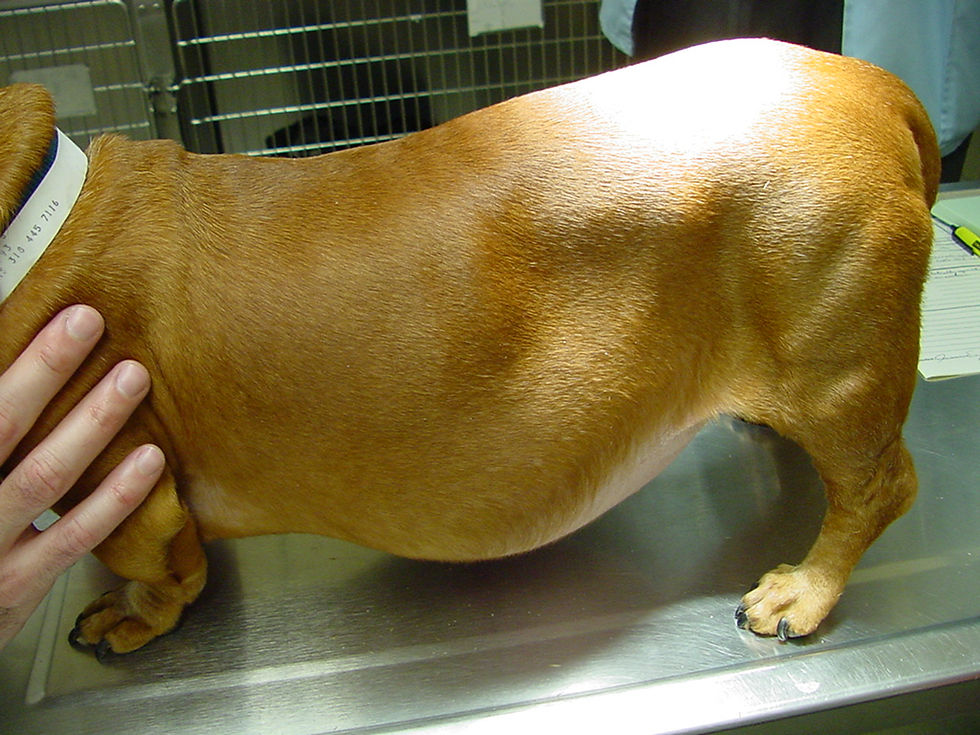Addison Disease
- Megan Donnelly
- Mar 10
- 2 min read

Addison disease, also known as hypoadrenocorticism, is caused by a deficiency of adrenal gland hormones. It is most common in young to middle-aged dogs. The cause is usually not known, but an autoimmune condition in which the body destroys some of its own tissue is likely. The adrenal gland can also be destroyed by other conditions, including medications used to treat Cushing disease and cancer in other parts of the body. Secretion of aldosterone, the main mineralocorticoid hormone, is reduced, which affects the levels of potassium, sodium, and chloride in the blood. Potassium gradually builds up in the blood and, in severe cases, may cause the heart to slow down or beat irregularly. Some dogs have such a slow heart rate (50 beats per minute or lower) that they can become weak or go into shock. Decreased production of glucocorticoids (such as cortisol) results in moderately low blood sugar. Dogs with atypical Addison disease can have low blood levels of cortisol but normal levels of sodium, potassium, and chloride.
Signs of Addison disease include repeated episodes of vomiting and diarrhea, loss of appetite, dehydration, and a gradual loss of body condition. Weight loss is often severe. Although signs can be hard to identify while Addison disease is developing, severe consequences, such as shock and evidence of kidney failure, can develop suddenly. The condition may be inherited in Standard Poodles, West Highland White Terriers, Great Danes, Bearded Collies, Portuguese Water Dogs, and a variety of other breeds. Although the disease can be seen in any breed, sex, or age, it is most common in young, female, adult dogs.
A veterinarian can make a tentative diagnosis based on the history, signs, and certain laboratory abnormalities, such as very low levels of sodium and very high levels of potassium in the blood. The diagnosis is confirmed by specific evaluation of adrenal function. This is done by measuring the level of cortisol in the blood, treating the dog with adrenocorticotropin (a hormone that stimulates the adrenal gland in healthy animals), and then measuring the level of cortisol in the blood a second time. Affected dogs have low baseline cortisol levels, and there is little response to administration of adrenocorticotropin.
An adrenal crisis is a medical emergency and requires treatment with intravenous fluids to restore levels of body fluids, salt, and sugar to normal. Hormone replacement treatment can often be started while the pet is being stabilized. Laboratory values are monitored regularly to assess response to treatment and adjust doses if needed. For longterm treatment, replacement hormones can be given by mouth or injection. Lifelong treatment is necessary.



Comments